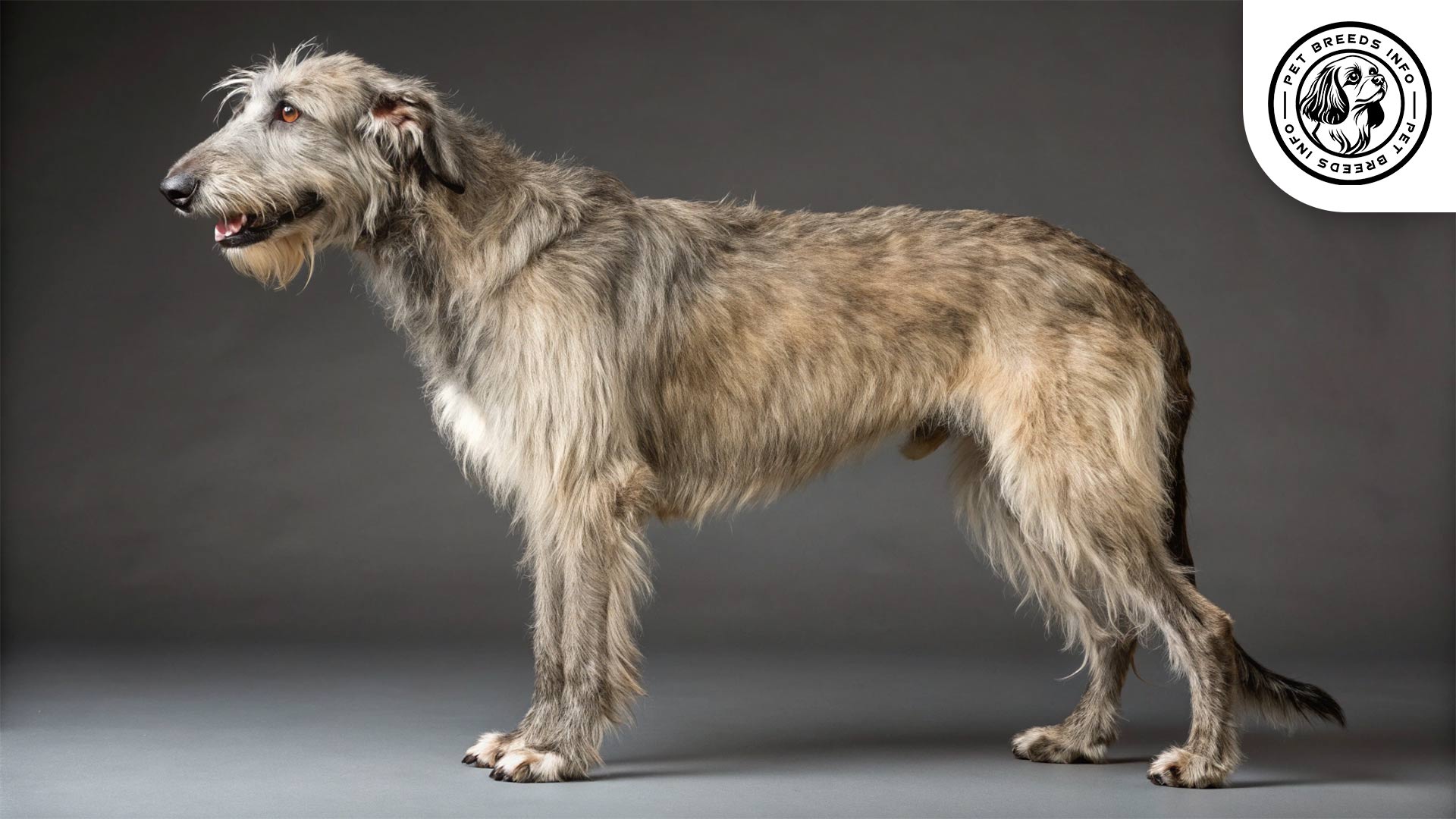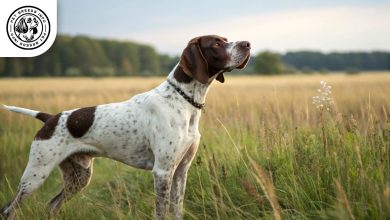Irish Wolfhound Dog Breed: Size, Helath, Price & Personality
General Introduction of the Breed
The Irish Wolfhound, known as “Cú Faoil” in Irish, is one of the tallest and most noble dog breeds. Originating from Ireland, this ancient breed has a long history dating back to the early centuries. Initially bred as a war and hunting dog, Irish Wolfhounds were used by Gaelic chieftains to hunt wolves and elk. Over time, they became beloved companions and status symbols among the nobility.
Table of Contents
| Weight | Males: 140-180 lbs (64-82 kg) Females: 115-140 lbs (52-64 kg) |
| Lifespan | 6-10 years |
| Diet | High-quality dry or raw, protein-rich, controlled calories, divided into 2-3 meals. Avoid processed and toxic foods. |
| Care | Moderate daily exercise (walks, fenced yard), ample space (not for apartments), weekly brushing, occasional baths, regular nail, ear, and teeth cleaning. Sensitive to heat. |
| Health | Prone to hip dysplasia, heart disease, osteosarcoma, gastric torsion (bloat). |
| Color | Gray, brindle, black, red, fawn, and white. |
| Nature | Highly intelligent, gentle, calm, affectionate, good with children and pets (may chase small animals), thrives on companionship, sensitive. |
| Price | $1,500 – $3,500 (breeder); adoption available. |
Physical Characteristics
Irish Wolfhounds are one of the largest dog breeds. Males typically stand between 32 and 36 inches (81-91 cm) tall at the shoulder and weigh about 140-180 pounds (64-82 kg). Females are slightly smaller, standing at 30-34 inches (76-86 cm) with a weight range of 115-140 pounds (52-64 kg).
The coat is rough and wiry, particularly around the face and legs. Common coat colors include gray, brindle, black, red, fawn, and white.
The eyes are medium-sized, dark in color, and have a kind expression. The ears are small, rose-shaped, and usually carried close to the head. The tail is long and slightly curved, covered with rough fur.
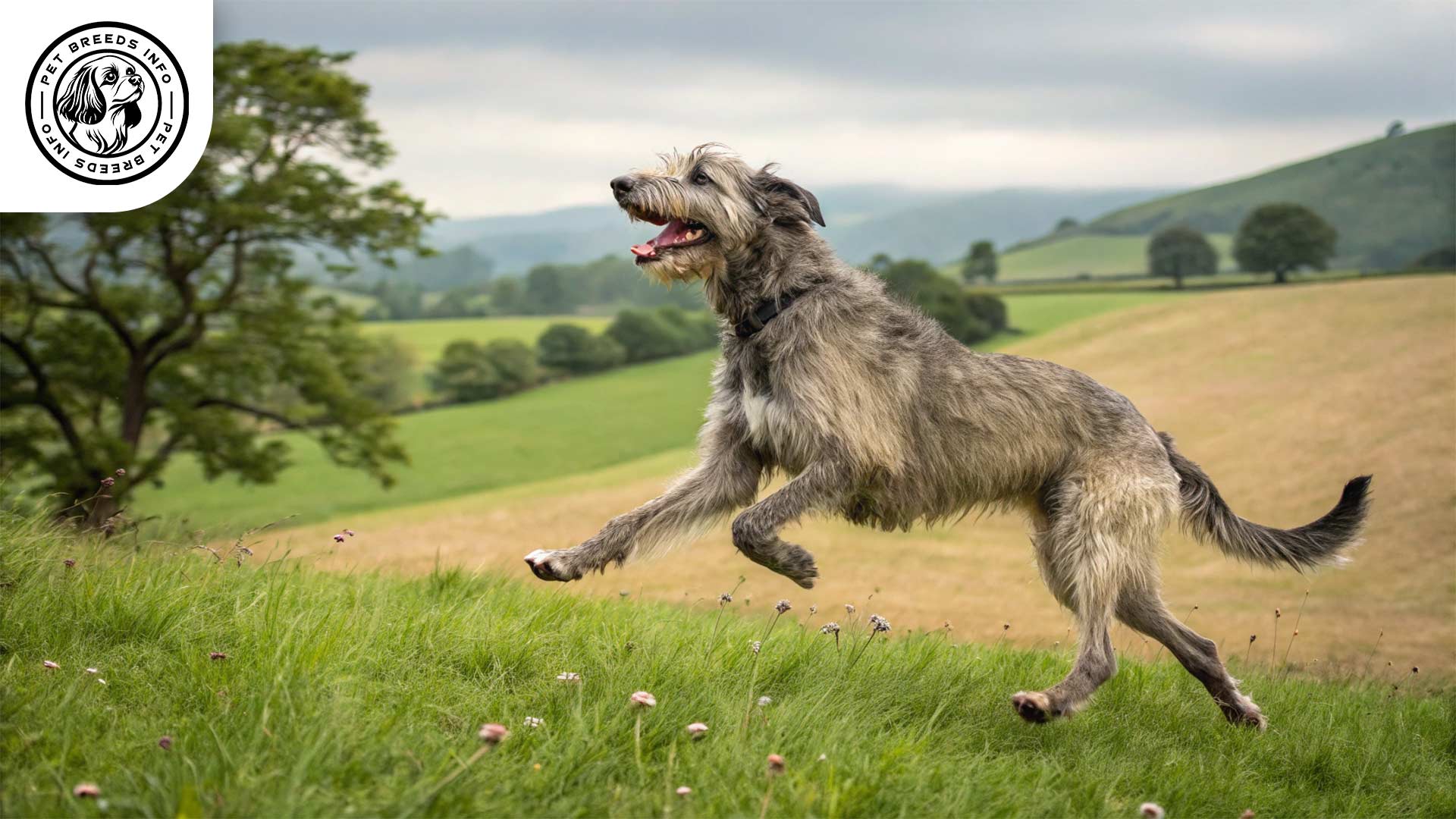
Personality and Temperament
The Irish Wolfhound is highly intelligent and relatively easy to train, though they have an independent streak. Despite their large size, they are gentle, calm, and affectionate.
They have moderate energy levels and require regular but not overly intense exercise. They are strongly attached to their owners and thrive on companionship.
This breed is generally good with children and other pets, making it a great family dog. However, due to their historical hunting background, they may have a chasing instinct around smaller animals.
They are highly sensitive to changes in their environment and require a stable, loving home.
Read More: Ibizan Hound Dog
Care and Maintenance Requirements
Irish Wolfhounds need moderate daily exercise, such as long walks or free-roaming in a fenced yard. Despite their size, they are not suited for apartment living and require ample space.
Their rough coat requires weekly brushing to prevent matting. They shed moderately and need occasional baths. Regular grooming for their nails, ears, and teeth is essential.
They are sensitive to extreme heat and should not be overexerted in hot and humid conditions. During colder months, they tolerate cool weather well but should not be left outside for long periods.
Diet and Nutrition
A high-quality dry or raw diet is best suited for this breed. They require a protein-rich diet with controlled calorie intake to support their large frame.
Owners should avoid overly processed foods, as well as toxic foods like chocolate, onions, and grapes. Large meals should be divided into 2-3 feedings per day to prevent bloat.
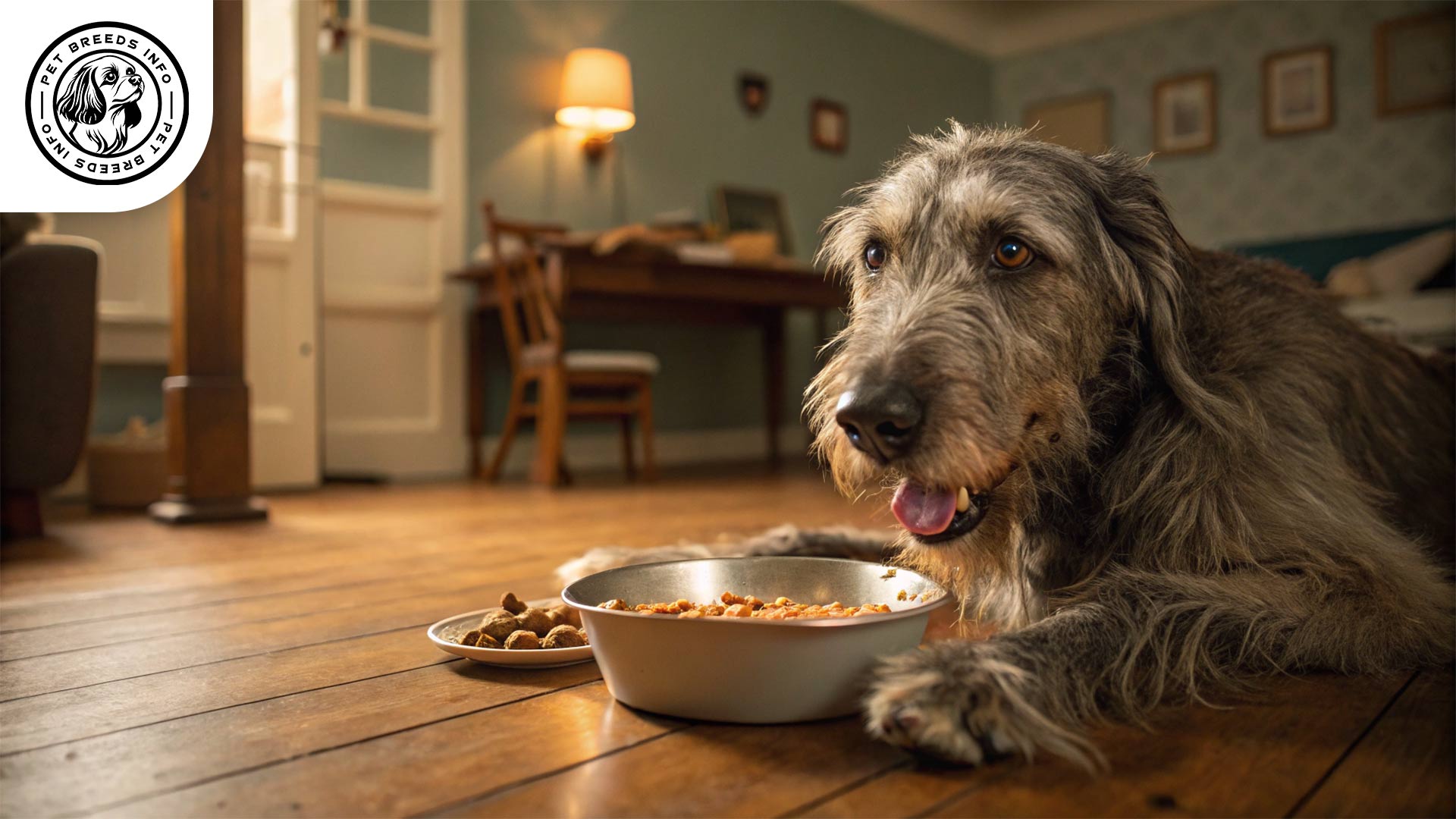
Health and Common Medical Issues
Irish Wolfhounds are prone to certain genetic conditions, including hip dysplasia, heart disease, osteosarcoma, and gastric torsion (bloat).
Their lifespan is relatively short compared to smaller breeds, averaging between 6-10 years. Regular veterinary check-ups and a proper diet can help maintain their health.
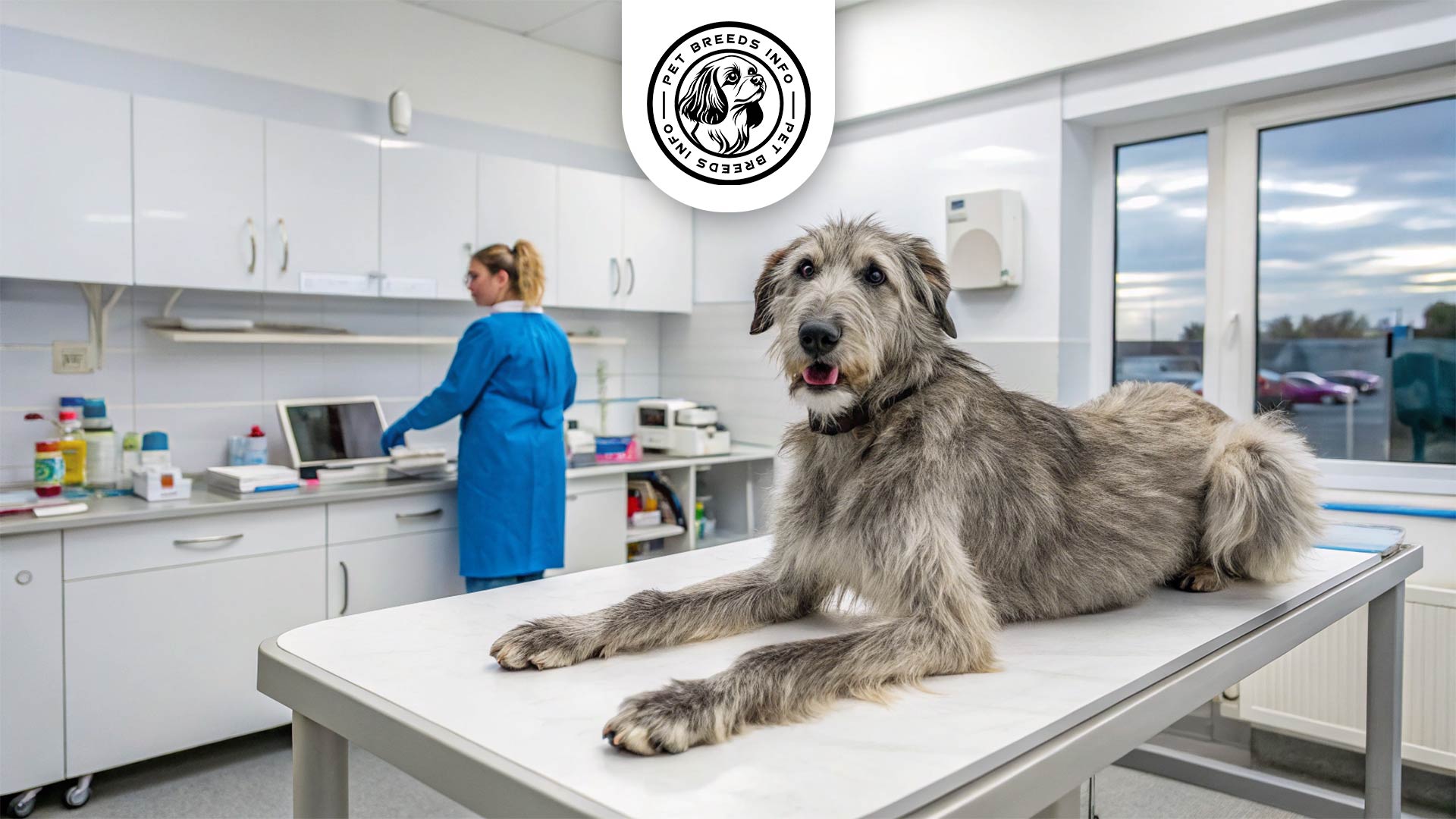
Training and Behavior Management
Irish Wolfhounds are trainable but require gentle and consistent guidance. Positive reinforcement works best for teaching commands.
Early socialization is crucial to ensure they develop good manners and confidence. Due to their large size, leash training is essential from an early age.
Read More: Irish Terrier Dog
Interaction with Other Animals and Humans
Irish Wolfhounds are known for their affectionate nature toward children, making them excellent family pets. However, supervision is recommended due to their large size.
They generally get along well with other dogs but may have a prey instinct toward smaller animals. They form strong bonds with their owners and prefer companionship over solitude.
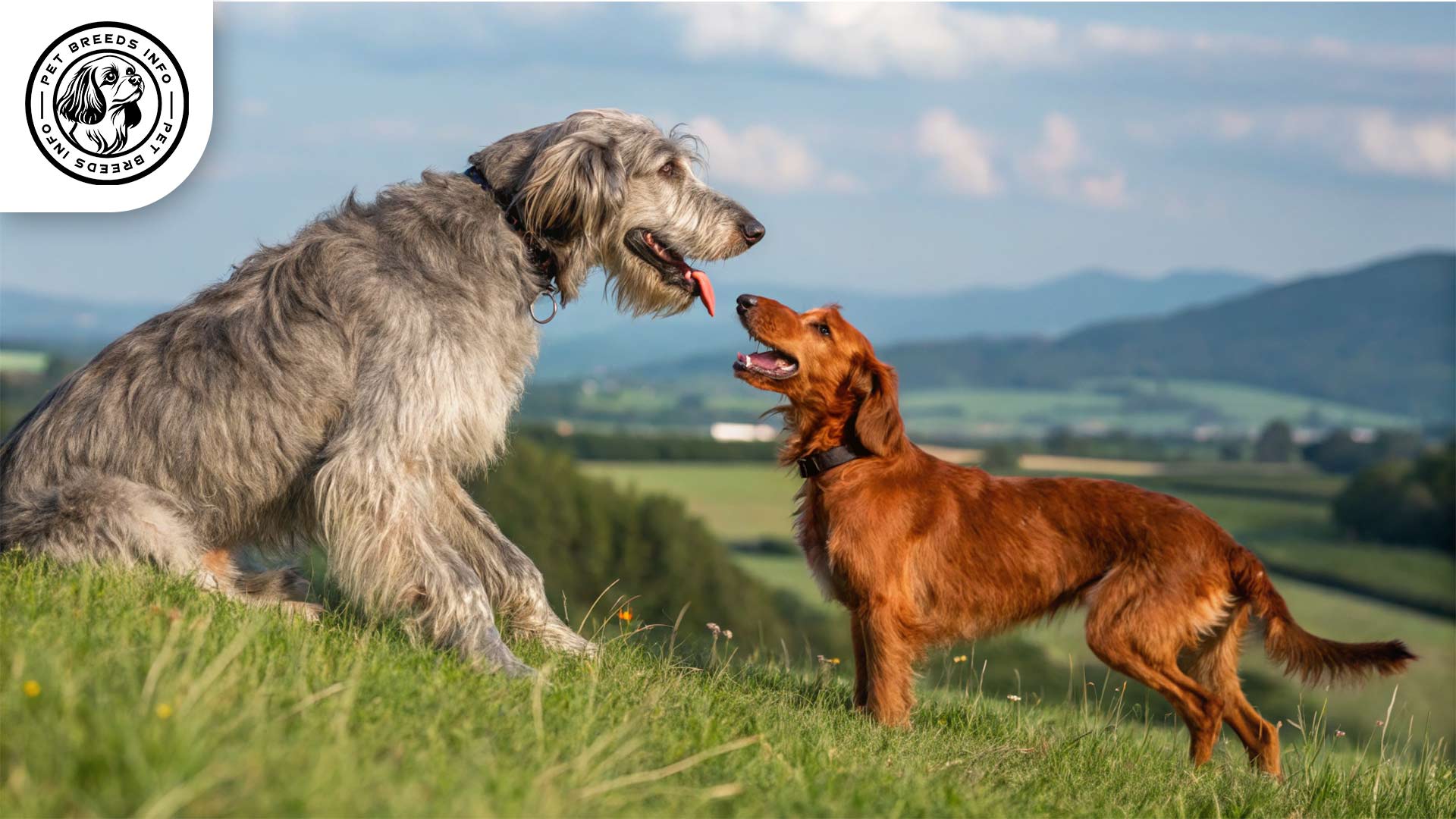
Price and Availability
The cost of purchasing an Irish Wolfhound from a reputable breeder ranges from $1,500 to $3,500. Adoption is a great alternative, with rescue organizations often having Wolfhounds available.
Prospective owners should ensure they are buying from ethical breeders who conduct health screenings to avoid genetic issues.
Conclusion and Final Thoughts
The Irish Wolfhound is a gentle giant with a loving heart but requires plenty of space and care. They are best suited for families or individuals who can provide consistent companionship, training, and a proper diet.
Potential owners should consider their short lifespan and susceptibility to health issues before choosing this breed. If given the right environment and care, the Irish Wolfhound makes a loyal, affectionate, and dignified companion.
Read More: Havanese Dog
FAQ
Are Irish Wolfhounds good with children?
Yes, Irish Wolfhounds are known for their affectionate nature toward children, making them excellent family pets. However, due to their large size, supervision is always recommended.
How much exercise does an Irish Wolfhound need?
Irish Wolfhounds have moderate energy levels and require moderate daily exercise, such as long walks or free-roaming in a fenced yard.
What is the average lifespan of an Irish Wolfhound?
The average lifespan of an Irish Wolfhound is relatively short compared to smaller breeds, typically between 6-10 years.
Are Irish Wolfhounds difficult to train?
Irish Wolfhounds are highly intelligent and relatively easy to train, though they have an independent streak. Gentle and consistent guidance using positive reinforcement works best. Early socialization is also crucial.
